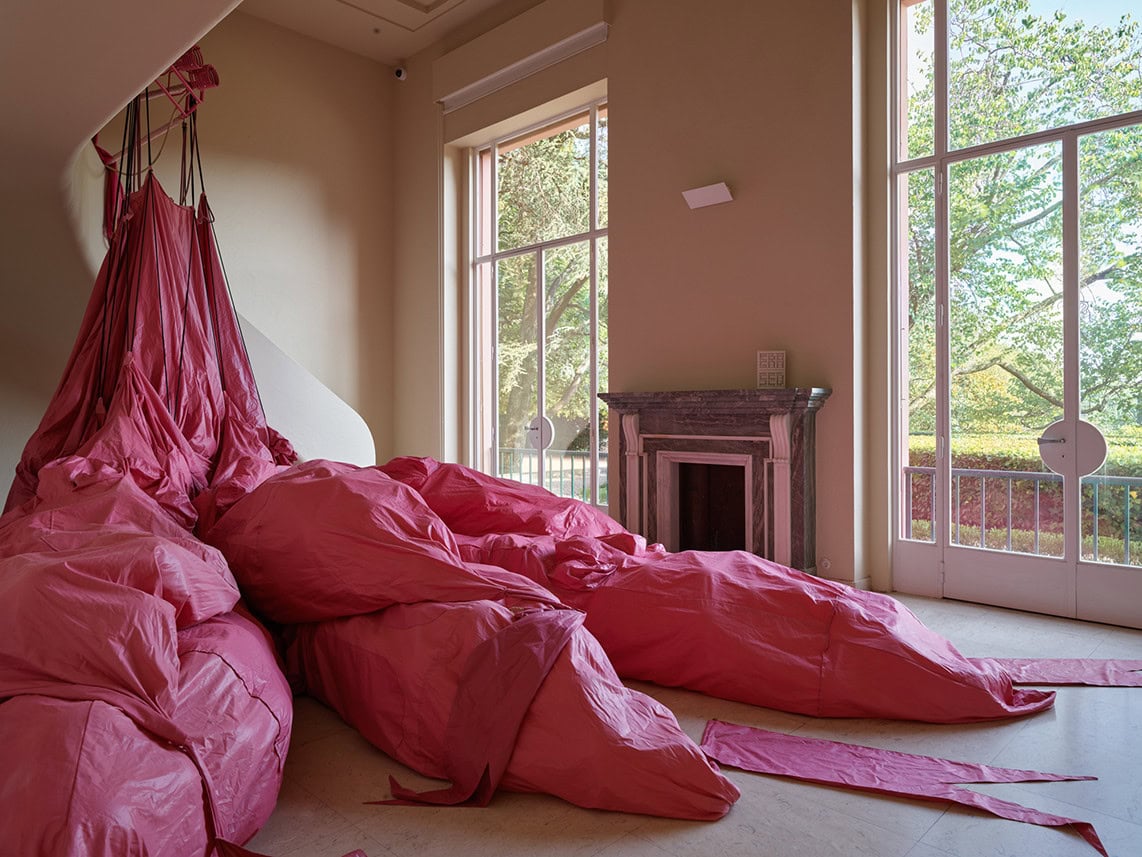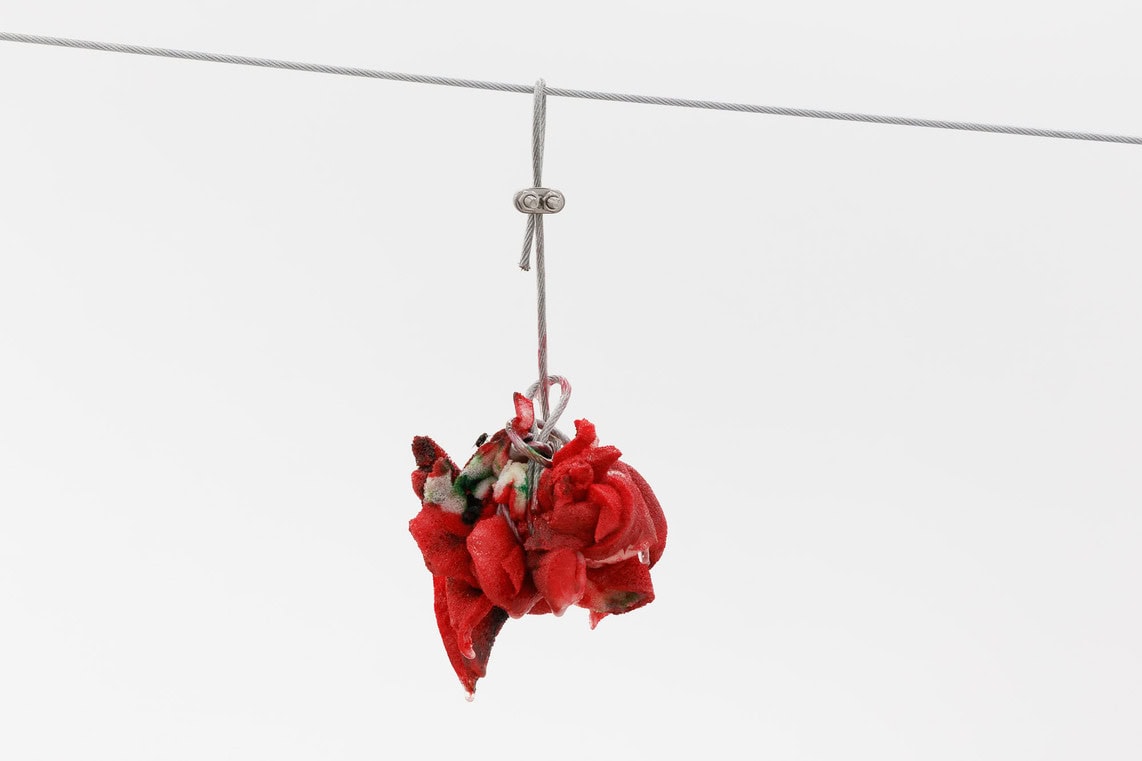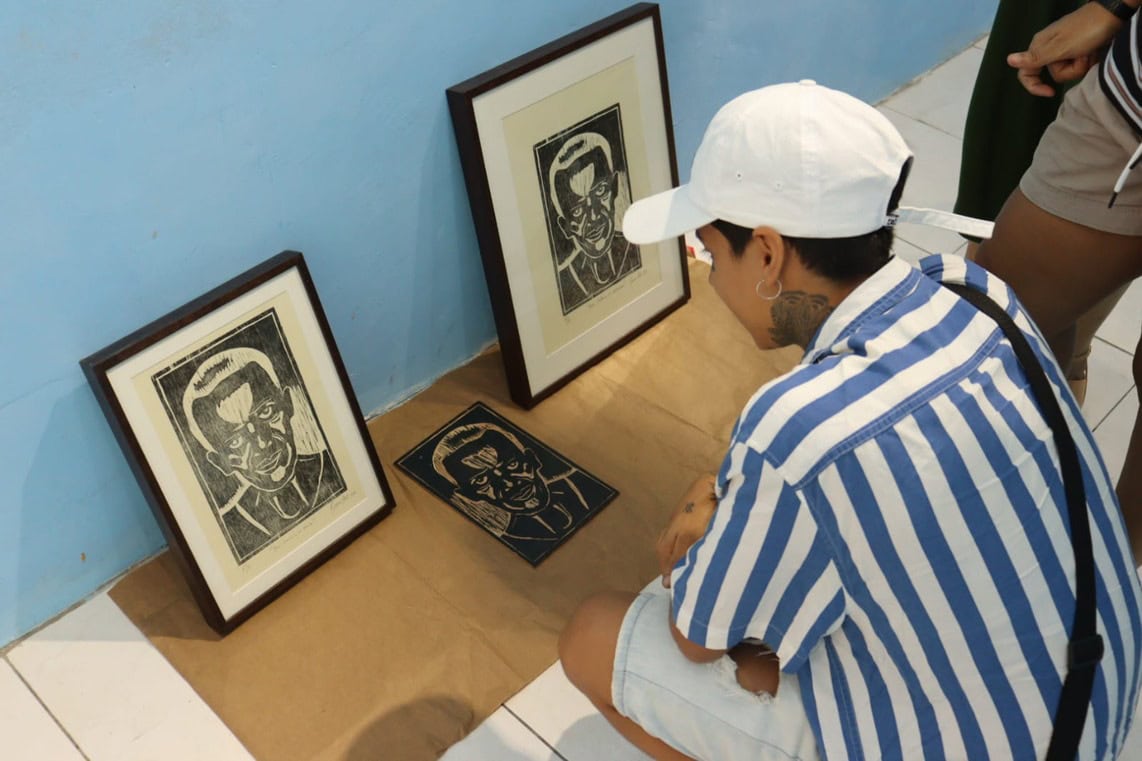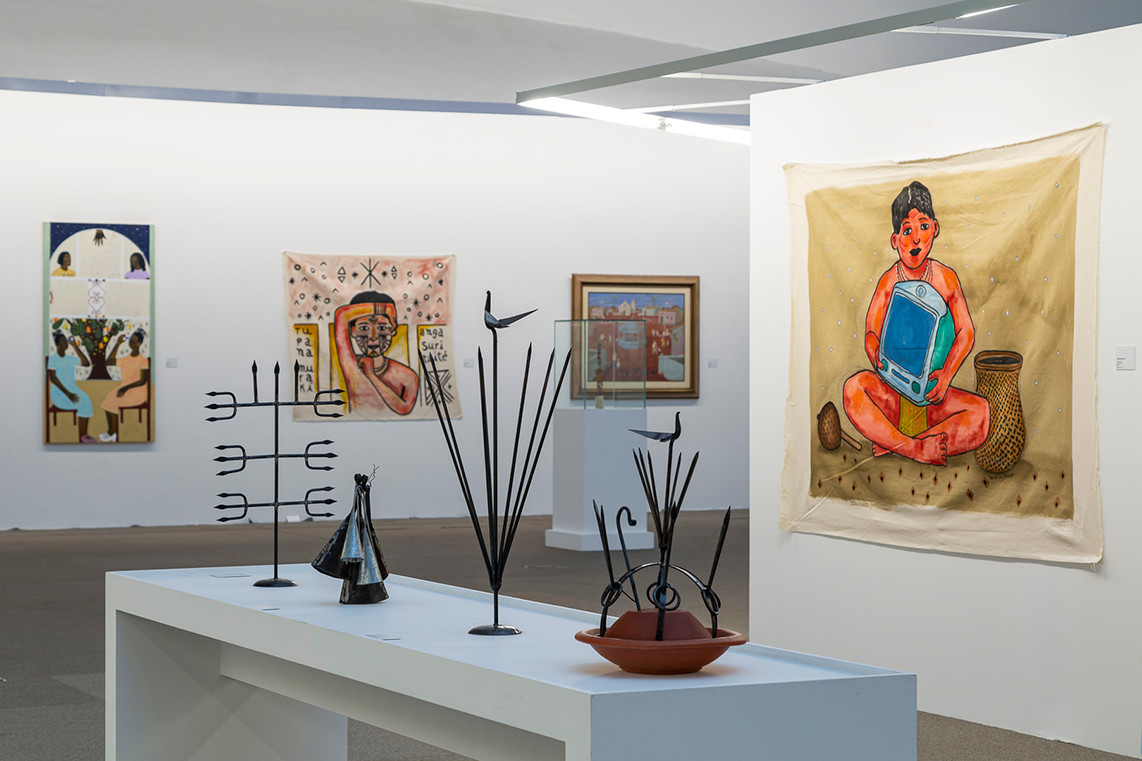A house-museum-school from/in Subúrbio Ferroviário of Salvador, Bahia, Brazil, subverts white, western and bourgeois Art notions and practices.
Agnaldo Novaes, Alàgbà of Ilé Axé Asìpá (a candomblé terreiro in Piatã, Salvador, Bahia, founded by the artist and thinker Mestre Didi) claims in the article “Axé: Nós Fazemos” that ‘the locus of art is that of preservation’. To preserve works of art is also to preserve memories, narratives and everything else that may symbolise ways of life. Achille Mbembe also refers to sculptures depicting slave figures or colonial symbols as ‘necromancy’. In other words, these are a spell cast by whiteness to keep brewing in the collective imagination the notion that the purposes and achievements of those societies are only possible due to Western, white, colonial, capitalist and slave-owning culture. Looking at the symbolic and historical significance of art from these angles allows us to comprehend and recognise the value of institutions such as Acervo da Laje.
Established by Vilma Santos and José Eduardo Ferreira Santos fourteen years ago, Acervo da Laje is one of Brazil’s most compelling contemporary art initiatives. Based on works by artists from Subúrbio Ferroviário de Salvador, Acervo da Laje is a museum-home-school welcoming and mirroring the tensions, solutions, emotions, expressions and desires of and from its territory. Nobody ever speaks for someone else. Acervo da Laje devises answers to questions such as representativeness, territories, corporeality, sense of belonging and traditions in the world. The guiding force behind its foundation was the urge to reaffirm and value the cycles of beauty, art and gentleness (no longer pain and despair) in Subúrbio Ferroviário in the city of Salvador, Brazil’s historic first capital and the current capital of the state of Bahia. This revolutionary initiative is firmly rooted in the Plataforma neighbourhood, where the Acervo is established. It focuses on and invests in different fields to promote and respect the health, well-being, education and, in short, humanisation of residents of the region and anyone who feels represented by it. Acervo da Laje represents one such example of a peripheral and black art institution which, although it dialogues with other institutions beyond its original territory, is truly in touch with the philosophies, aesthetics, poetics and cosmogonies of its own turf which, in some ways, also embodies the reality experienced by most of Brazil’s black and/or poverty-stricken population.
Acervo da Laje was the only museum in Brazil and the Americas to be considered for the 2023 edition of the MuseusFuture project, promoted by the Goethe Institute in South Africa, whose purpose is to ‘redefine traditional approaches to museology, offering new forms, languages and perspectives to promote new cultural horizons’. Vilma Santos and José Eduardo Ferreira Santos, founders of Acervo da Laje, were in Maputo, the Mozambican capital, from December 7 to 12, 2023, to visit Museu da Mafalala. In José Eduardo’s words, the exchange ‘was truly special, as it helped us to consider the future of Acervo da Laje with more optimism, proactivity and dialogue, and provided a space for dialogue and planning for the future, as well as the opportunity to visit Museu da Mafalala in Maputo, Mozambique and forge closer ties with this very important institution in the world, an exchange that was highly significant for both museums, opening the door to new partnerships and collaborations. I got to know musical expressions such as Marrabenta, as well as local artists who must be appreciated here in Brazil.”
Not long before attending the face-to-face exchange, on 25 November 2023, Acervo da Laje launched the exhibition Memórias para Dona Antônia, a tribute to the matriarch of the Acervo and mother of Vilma Santos – Dona Antônia Dias Soares. This is an emotional, ancestral and contemporary exhibition dedicated to a black woman from the outskirts of Salvador, who was extremely important to making Acervo da Laje a reality. ‘With her passing in February this year (2023), we asked several artists to portray her in different artworks, which led to this exhibition,’ the institution stated. It brings works together from 25 artists who, using different media and techniques, contributed to the show using as sources two single photographic records of Dona Antônia: the first by Elzinha Abreu in 2015 and the second by Ana Devora in 2020. Besides its collective curatorship, the exhibition also includes critical writings that were read during the three pre-openings. Available via QR Code in the exhibition venue and also in an e-book posted on Acervo da Laje’s Instagram account, the texts were penned by ‘critics, curators and teachers who are related to Acervo da Laje’s experiences, to provide, throughout the show, debates and dialogues about the representation of black people in the visual arts, the importance of black women in art circles and the development of fresh educational possibilities for new generations’, José Eduardo Santos said. The authors include Gabriela Leandro Pereira Gaia, Izabela Pucu, Paola Barreto, Keyna Eleison, Marcelo Campos and Lilia Schwarcz who, in her text, states: ‘She also owned the house that hosted the Acervo da Laje, a collective art project in its DNA, and one that has been revolutionising the traditional structures in the arts world, still very much shaped by elitist models that have the curator as their greatest and most centralising symbol. For its part, Memórias para Dona Antônia is diverse and open. Both in the works and the curatorship. The exhibition will stay at Acervo da Laje’s headquarters for an indefinite period.
After having visited the exhibition a number of times over the last ten months, I have come to understand that there is an acute subversion that is not based on a rationalist approach, but on an affective one. Memórias para Dona Antônia thus leads us to believe that portals are possible. That thing capable of unveiling the soul of time, of uncovering our place in space. To rationalists, perhaps it is too much of an exaggeration or hyperbole to assert that a portal does exist in Subúrbio Ferroviário in Salvador, a city in Brazil’s northeast. What will reason have to say when it finds out that this portal’s value rests on the very fact that it does not lead us anywhere else? Quite the opposite: its worth is to make us put endless roots down and aspire to reach other heights. The reason for this portal’s very existence is to bolster the meaning of life right where it is: over here, the way we do it, with the beauty we have and the wisdom we envision. In this instance, the portal has a name and a surname: we call it Acervo da Laje. And it answers. It expands gracefully.
Memórias Para Dona Antônia is emotional. We have seen tributes to geniuses, artists, writers, insects, words, sensations, but never to a life mainstay like her. A cornerstone as a cook, a shellfish worker, a midwife, a mother, a grandmother, love, love, love. Labour, sharing, intelligence, wisdom and love. Dona Antônia. Not some abstract figure, a common name, a woman like thousands or millions of other Brazilians. No. She. Dona Antônia, in and for Subúrbio Ferroviário, specifically in the Plataforma neighbourhood, in Rua Sá de Oliveira, with a life, a face, love, a name, daughters, roots and memories that we must remember and acknowledge as deserving of taking up this elitist role that is Art as we usually (or once) recognised it. Worthy of the time of the entire team that put on the exhibition, of all the artists, with sweat, talent, tears and laughter, traces of their lives. Worthy of the courage of the outstanding artist Ludmila Lima, who had not painted for some time and arrived at Acervo with a work in her honour. Worthy of the spark of self-esteem and brilliance that led a former pupil of Vilma Santos to visit and declare that she paints, handing in a piece. There are several manifestations of her sovereignty around this sovereign woman. It all seems, and is, as it should be, an ode to Dona Antônia. This is already quite a lot. That is everything. Or nearly so.
Devoting works, times, spaces, voices, words, lights, looks, energies, bodies and discussions (such as this one) to Dona Antônia has already brought about a major change in what can be seen as the role of the arts in Brazil and in the world. She is not just the seed of what is now Acervo da Laje, the original and essential cell. But it is also the cornerstone, I insist, of a community, of a family, with an entire set of philosophies and know-how that are still utterly true because they are collectively remembered. There is nothing to say about its impact on the lives of those who coexisted with it. Only they can say so. We should make an effort: just imagine visiting an exhibition like this, honouring someone who fed you with words, heart and hands. Someone who may have known you before you knew her (time has wonders like this). I say it again: Memórias para Dona Antônia is emotional. I relinquish my job as a critic to stress what cannot be put into merely logical words. I renounce criticism in this anti-critical section of the text simply because her daughter Suely Santos, who mediated the exhibition, told me that Dona Antônia could see with her heart. The artist Bruno Costa understood it in his work.
White, elitist concepts of art have no place here. These premises are thoroughly challenged by the exhibition and by Acervo da Laje over the course of its existence. It calls for evolution, the territory is absolute and its memories are magisterial. There is Acervo da Laje, the portal of portals. Dona Antônia certainly attained many glories in her life. Following her passing, her memory is celebrated and protected by what is the most important artistic, educational and family institution in the world: her home. Forever a portal, Dona Antônia. Eternity celebrates you.


-m8btp.jpg)


